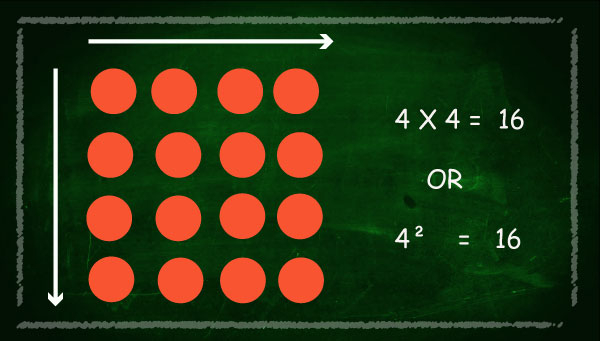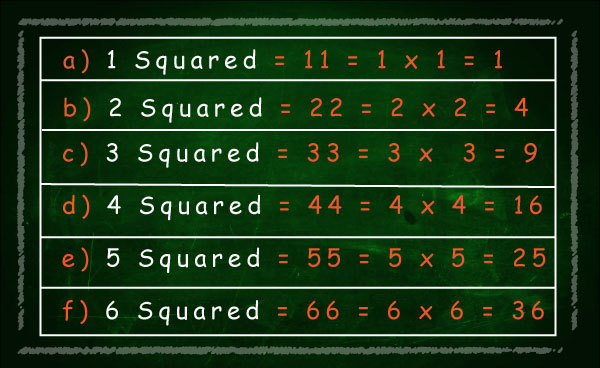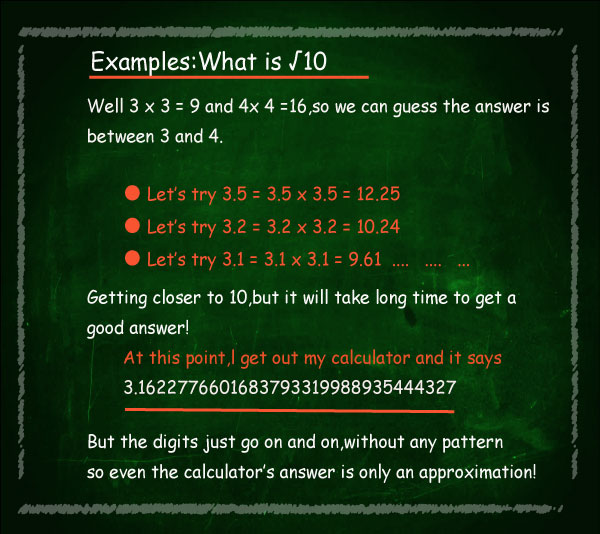"Squared" is often written as a little 2 like this:


Squares From 12 to 62

You can also find the squares on the Multiplication Table:

You can also square negative numbers.
(-5) × (-5) = 25
(a negative times a negative gives a positive)
When you square a negative number you get a positive result.
Just the same as if you had squared a positive number:


4 squared is 16, so a square root of 16 is 4
A square root of a number is, a value that can be multiplied by itself to give the original number.
Example
The square root of 9 is 3, because when 3 is multiplied by itself you get 9.

This is the special symbol that means "square root", it is sort of like a tick,
and actually started hundreds of years ago as a dot with a flick upwards.
It is called the radical, and always makes mathematics look important!
You can use it like this:
![]()
you would say "square root of 9 equals 3"
Example:
What is √25?
Well, we just happen to know that 25 = 5 × 5, so if you multiply 5 by itself (5 × 5) you will get 25.
So the answer is:
√25 = 5
It is easy to work out the square root of a perfect square, but it is really hard to work out other square roots.

Note: Numbers like that are called Irrational Numbers.
There is a fun method for calculating a square root that gets more and more accurate each time around:
And so, after 3 times around the answer is 3.1623, which is pretty good, because:
3.1623 x 3.1623 = 10.00014
Now ... why don't you try calculating the square root of 2 this way?
What if you have to guess the square root for a difficult number such as "82,163" ... ?
In that case I would think to myself "82,163" has 5 digits, so the square root might have 3 digits (100x100=10,000), and the square root of 8 (the first digit) is about 3 (3x3=9), so 300 would be a good start.
Play this video to learn more about square roots